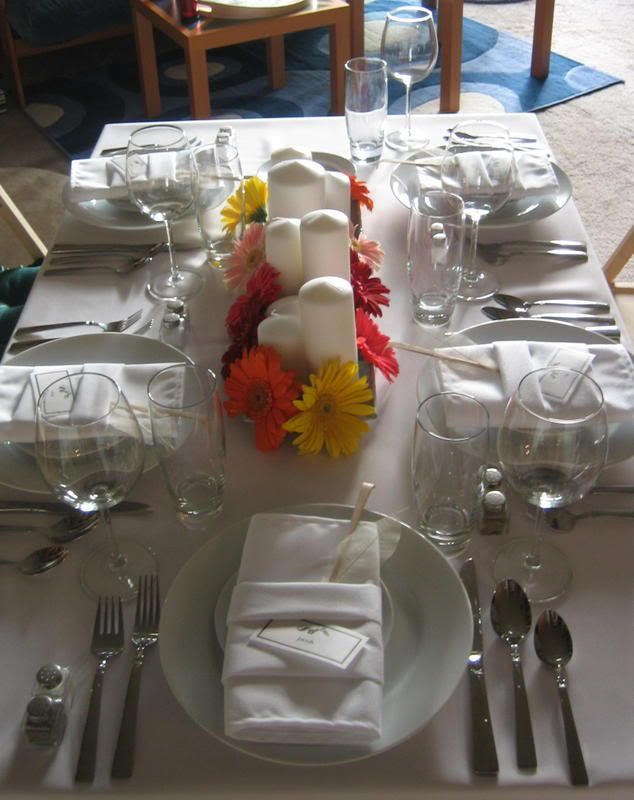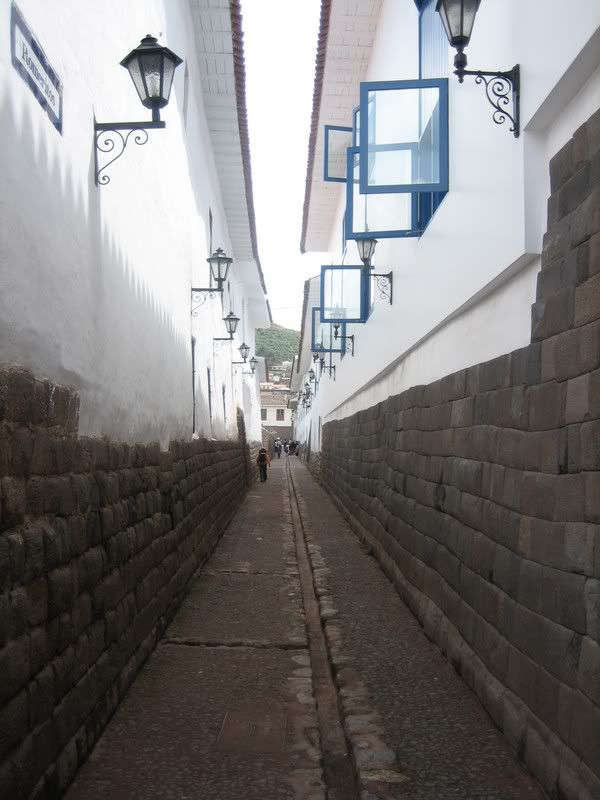
Our chef's
degustation and wine tasting event continued with a plate of three
amuses bouche (see previous post for an explanation of the term). Unfortunately, our pictures do not do them justice!
Served on a white Asian-inspired plate, with a porcelain Chinese soup spoon resting on a vibrant green lemon leaf, the three bite-sized morsels were each quite different-- although complementary-- from each other. One was earthy and buttery, one pungent and sharp, and one cool and creamy. Together, they created three bites that tickled our taste buds and prepared us for the remainder of an enjoyable evening!
The first amuse
bouche of the three is also a recipe inspired by Chef Thomas Keller- A delicate poached quail egg, warmed gently in a butter emulsification peppered with
brunoise of turnip, carrot and leek, and topped with
applewood smoked bacon. The buttery sauce, combined with the molten egg yolk, and crunchy smoked bacon created a delicious flavor combination!

Our second amuse
bouche was sharp and pungent in contrast to the smoothness of the poached egg, and cut through the buttery flavors coating our palates. Here, fire-roasted sweet chili peppers sat atop a blini of acidic white turnip. A small portion of roasted eggplant puree and a f
resh thyme sprig provided the bite with an earthy and smooth finish.

Our last amuse
bouche was cool and creamy-- the perfect way to finish this course. A crunchy handmade jasmine rice cracker with sea salt was topped with a chilled mint
gelee, which acted as a fragrant palate cleanser. A dollop of creamy cauliflower-infused
panna cotta topped the
gelee, with a braised cranberry bean finishing the dish and providing a bit of textural contrast.

All in all, the three bites of food-- each more complex than the last-- only made us hungrier for what was to come. Our coverage of the event continues in tomorrow's blog, with a foray into molecular gastronomy! Be sure to check back...
 Continuing our recap of the culinary journey that was our recent chef's degustation, we arrive at a challenge. It seems only proper to serve some form of bread with a formal dinner, and we truly enjoy firing up our hearthstone and doing so. However, with degustation, a chef does not wish to provide too much of a filling starch, resulting in guests becoming satiated prior to the conclusion of the meal. After some debate, our solution was the gruyere cheese gougeres pictured at right.
Continuing our recap of the culinary journey that was our recent chef's degustation, we arrive at a challenge. It seems only proper to serve some form of bread with a formal dinner, and we truly enjoy firing up our hearthstone and doing so. However, with degustation, a chef does not wish to provide too much of a filling starch, resulting in guests becoming satiated prior to the conclusion of the meal. After some debate, our solution was the gruyere cheese gougeres pictured at right.












































































